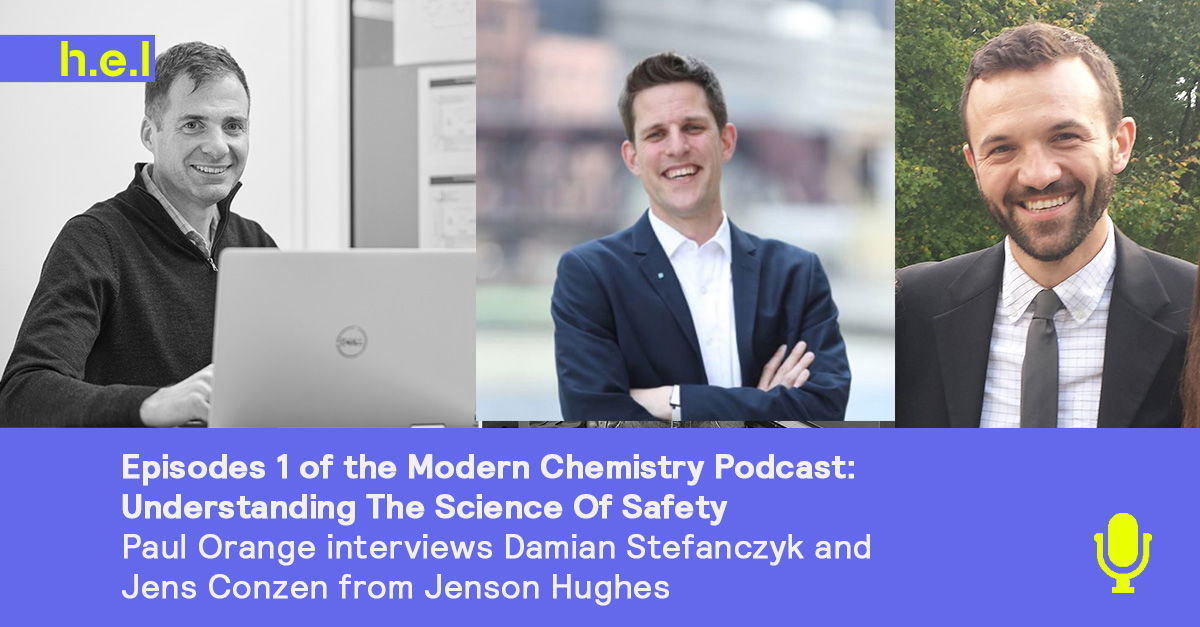
For episode 1 of the Modern Chemistry Podcast, I interviewed Damian Stefanczyk, Senior Consultant, and Jens Conzen, Associate Director, Industrial and Process Safety, at Jensen Hughes.
You can also listen to this podcast by clicking on this link: https://0-series-preview.simplecast.com/episodes/understanding-the-science-of-safety-with-jensen-hughes
Our theme music is “Wholesome” by Kevin MacLeod
Music from Film Music
License: CC BY
Connect with me (Paul) on LinkedIn.
Terms used during interview
- The chemical ‘MDI’ – stands for Methylenediphenyl diisocyanate. MDI is often used to produce rigid insulation for homes and other buildings. It is also used in sealants, adhesives, and weather-resistant materials in different forms. If you want to jump down this rabbit hole, check out this resource on this class of chemicals.
- Heat capacity. Heat capacity is a property of all matter. It refers to the amount of heat that needs to be supplied to a material to raise the temperature of the material. The SI unit of heat is Joules per degree Kelvin. Simply put, materials with a lower heat capacity will warm up with less external heat input than materials with a higher heat capacity.
- Calorimetry. This is the science of measuring material temperature changes under certain conditions. In our discussion, we talk about the specific technique of Adiabatic reaction calorimetry, which mimics a situation where no heat is lost from the material under examination. – this allows investigation of potentially unwanted (hazardous) events happening).
- Phi factor. The Phi factor is an adjustment used during adiabatic calorimeter experiments. As a reaction proceeds, the calorimeter will absorb some of the heat generated by the reaction. The Phi factor describes how much more heat needs to be added to the calorimeter to mimic a true adiabatic system. The lower the Phi factor, the less external heat needs to be added, and therefore, the more closely the experiment mimics the real reaction.
You can find out more information on their website and connect on LinkedIn with both Jens and Damian.


